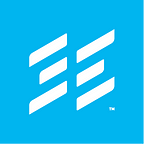The Bot Ate My Homework: How Technology is Changing Education and Work
By Elizabeth Coston McCluskey
It has been a busy couple of months on conference circuit, in particular on the topics of edtech and workforce development. I recently attended the Lumina Foundation’s LIFTed Convening, ASU/GSV’s annual Summit, and Axios’ “Future of Work” panel. The crowd at each event was slightly different, enabling me to get perspectives and have conversations with educators, investors, entrepreneurs, policymakers, and economists — not to mention John Legend and former president George W. Bush.
One of the prevailing themes was the rise of automation and AI, and whether it presents a threat or an opportunity. Numerous speakers and panelists cited a report from Oxford University that posited 47% of US employment is at risk due to “computerization.” While the report came out in 2013, it seems that conversation about the reality of this possibility is reaching a fever pitch in 2018. One of the report’s conclusions is that lower wage jobs that require less education will be the most susceptible to tech outsourcing.
However, the message of many was that all is not lost. Vanguard’s chief economist made an important distinction between tasks and jobs. He suggested that while up to half of a given person’s tasks may be automated, it will not eliminate their job but rather change the nature of it. Reducing mundane tasks should enable them shift to more “uniquely human” ones that involve skills like creativity and empathy. This thought was repeated by an ASU/GSV panelist who talked about the increasing importance of “human literacy”: being competent in communication, teamwork, empathy, and cultural agility. I also heard this message directly from those who are affected by the shift. A factory worker talked about how the addition of a robot to the factory floor initially concerned his team. However, once it was in operation, they discovered that removing some of the rote work has enabled them to focus on craftsmanship elements, as well as shifting their job responsibilities to be more focused on the big picture.
So what does this mean from an education perspective? There is increasing skepticism about whether higher education is relevant for much of today’s workforce. Until now, the system has been provider-centric, vs. worker- or learner-centric. Case in point: higher education communicates through peer reviewed journals, but the number 2 search engine in the world is YouTube. The needs and interests of learners have changed, and traditional education has been slow to adapt.
Another criticism I heard is that higher education’s historic attitude has been “we don’t do lifelong learning.” In a rapidly evolving technology-focused society, it’s no longer practical to assume you can teach students everything they need to know in 4 years. If higher education institutions want to survive, they will need to teach students how to learn. The presidents of Harvey Mudd College and Northeastern University suggested one of the ways this can be done is by building in more experiential components, which help students learn about their own strengths and weaknesses, as well as identify opportunities for innovation. Vocational schools and community colleges have been quicker to adapt to this reality and offer students clear, focused pathways into middle-skilled careers. While historically under-invested in, these types of programs are becoming increasingly vital to companies looking to fill their workforces. As a result, we have started to see and would expect continued growth in collaboration between corporations and “nontraditional” educational providers.
A final interesting point of discussion was around equity and equality related to education, career paths, and technology. One panelist highlighted that AI learns from our current systems, which are inequitable. So we need to spend time being intentional about building new systems that reflect societal values and work to bridge gaps vs. widening them. Some universities are rising to the challenge. The University Innovation Alliance is a national coalition of public research universities who are committed to increasing the number and diversity of college graduates in the United States. They are doing this by leveraging technology and data. One initiative utilized predictive analytics and proactive advising interventions at Georgia State University to improve retention 5% from semester to semester and reduce time-to-degree for graduating students by almost half a semester. ASU launched an eAdvisor program that helped students settle on a major faster, enabling four year graduation rates for low income students to jump from 26% to 41%, almost on par with higher income students.
So while technology is portrayed as the bogeyman by some, we are optimistic that it can be harnessed for good. We continue to look for ways to invest in technology that enables access, empowers teachers, and enhances outcomes for students, job seekers, and lifelong learners.
Did you like this post? Sign up for our newsletter and we’ll send you the latest impact investing and Impact Engine news each month.
